Abstract [View PDF] [Read Full Text]
Objective
To investigate the role of microRNA (miR)-155 in hydrogen peroxide (H2O2)-induced oxidative stress injury in lens epithelial cells (LECs) and its mechanism regulating silent information regulator factor related enzymes 1 (SIRT1).
Methods
The HLE-B3 at the logarithmic growth phase was taken and cultured for 24 hours under different concentrations of H2O2 (0, 50, 100, 200, 400, 800 μmol/L), and the cell viability was detected by MTT assay to determine the optimal concentration of H2O2 for establishing an oxidative stress injury model.HLE-B3 cells were divided into 6 groups, untreated blank control group, model control group cultured with 100 μmol/L H2O2, miR-155 mimics group transfected with miR-155 mimics, miR-155 mimics negative control group transfected with miR-155 mimics negative control, miR-155 inhibitor group transfected with miR-155 inhibitor, and miR-155 inhibitor negative control group transfected with miR-155 inhibitor negative control.Transfected cells were cultured with 100 μmol/L H2O2.Cells in various groups were cultured for 24 hours, and cell morphology was observed under an inverted microscope.The relative expression of miR-155 and SIRT1 mRNA in cells was assayed by fluorescent quantitative PCR.Cell apoptosis rates were detected by flow cytometry.Reactive oxygen species (ROS) content was identified by 2′, 7′-dichlorofluorescein diacetate (DCFH-DA) fluorescent probe method.Superoxide dismutase (SOD) activity and malondialdehyde (MDA) concentration were measured by ELISA method.The targeting of SIRT1 by miR-155 was tested by dual luciferase reporter gene system.Expressions of SIRT1, B-cell lymphoma/leukemia-2 gene (bcl-2), bcl-2 associated X protein (bax), cleaved-cysteine aspartase 3 (cleaved-Caspase-3) proteins were determined by Western blot.
Results
With the increase of H2O2 concentration, the cell viability gradually decreased, and the differences in cell viability among different concentrations were statistically significant (all at P<0.05), and 100 μmol/L was selected as the experimental concentration.Cells in blank control group grew well adherently.The number of cells in model control group decreased, and the morphology of some surviving cells changed, and their boundaries were blurred.There were fewer cells in miR-155 mimics group than model control group, and the cell morphology changed.There were more cells in miR-155 inhibitor group than model control group, and the cells grew well.Compared with model control group, the relative expression level of miR-155, the apoptosis rate, ROS content, MDA concentration, as well as the relative expression levels of bax and cleaved-Caspase-3 proteins were increased, and the relative expression level of SIRT1 mRNA, the SOD activity, the relative expression of SIRT1 and bcl-2 proteins, as well as bcl-2/bax were decreased in miR-155 mimics group, and the differences were statistically significant (all at P<0.05). Compared with model control group, the relative expression of miR-155, the apoptosis rate, ROS content, MDA concentration, as well as the relative expression levels of bax and cleaved-Caspase-3 proteins were decreased, and the relative expression level of SIRT1 mRNA, SOD activity, the relative expression levels of SIRT1 and bcl-2 protein, as well as bcl-2/bax were significantly increased in miR-155 inhibitor group, and the differences were statistically significant (all at P<0.05). The relative luciferase activity of wild-type SIRT1 in cells transfected with miR-155 mimics was 0.41±0.07, which was significantly weaker than 1.00±0.11 in cells transfected with miR-155 mimics negative control, and the relative luciferase activity of wild-type SIRT1 in cells transfected with miR-155 inhibitor was 1.98±0.17, which was significantly higher than 1.00±0.12 in cells transfected with miR-155 inhibitor negative control, showing statistically significant differences (t=7.838, 8.157; both at P<0.05). No obvious effect on the relative luciferase activity of mutant SIRT1 was found in transfected cells.
Conclusions
miR-155 is involved in H2O2-induced oxidative damage of LECs, and its overexpression can target the expression of SIRT1 and play a role in cell injury.
Key words:
Figures and tables

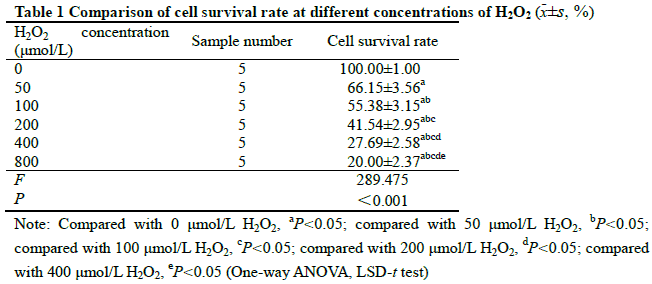

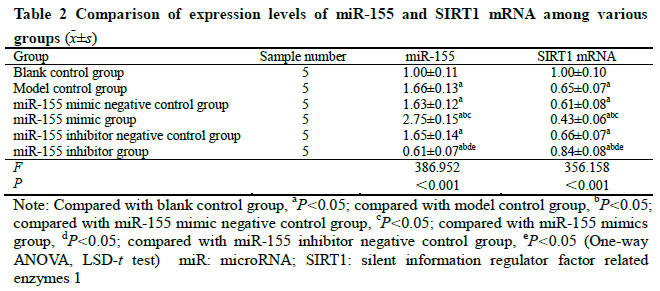
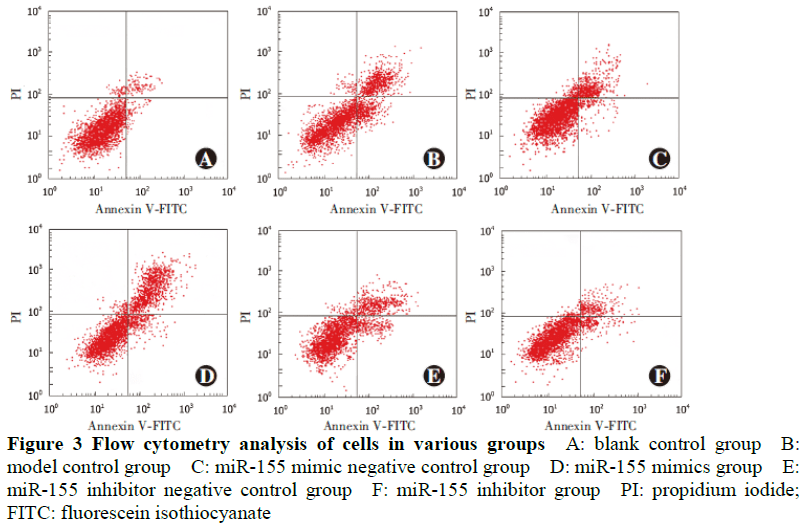



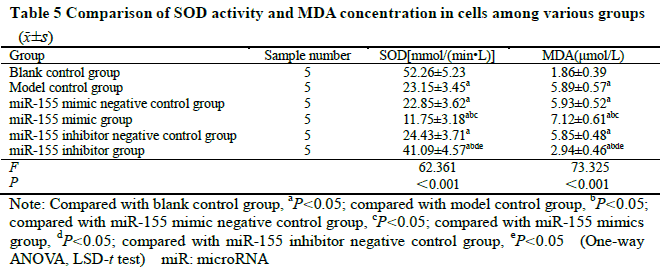
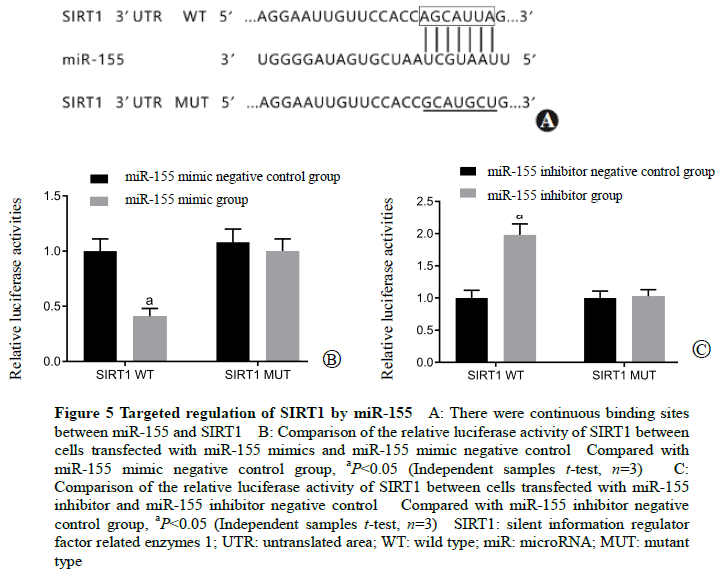
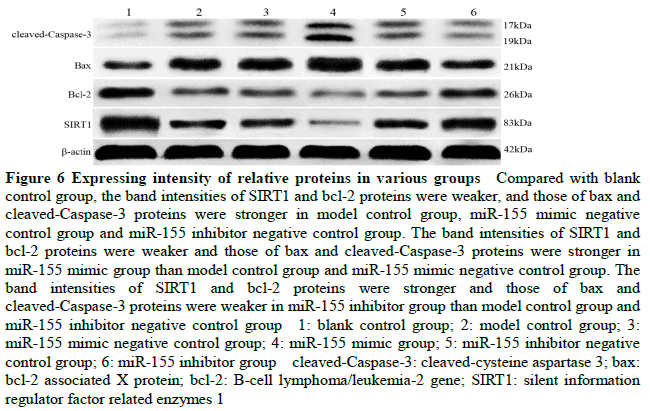

Contributor Information
Department of Ophthalmology, Shanxi Provincial People’s Hospital, Taiyuan 030012, China
Department of Ophthalmology, Shanxi Provincial People’s Hospital, Taiyuan 030012, China
Department of Ophthalmology, Shanxi Provincial People’s Hospital, Taiyuan 030012, China